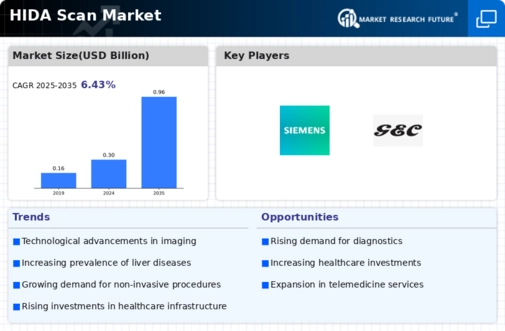Market Share
HIDA Scan Market Share Analysis
The market share positioning strategies in the HIDA Scan market play a crucial role in determining the success and competitiveness of medical imaging companies. The HIDA Scan, or Hepatobiliary Iminodiacetic Acid Scan, is a diagnostic tool used to assess the functionality of the liver, gallbladder, and bile ducts. In this dynamic healthcare landscape, companies employ various strategies to secure and enhance their market share.
One prevalent strategy is differentiation, where companies focus on offering unique features or advanced technology in their HIDA Scan systems. By providing superior image quality, faster scan times, and innovative software functionalities, companies aim to set themselves apart from competitors and attract healthcare providers seeking state-of-the-art diagnostic capabilities. This strategy not only helps in acquiring new customers but also in retaining existing ones who prioritize cutting-edge technology.
Another key strategy involves cost leadership, wherein companies strive to become the low-cost provider in the HIDA Scan market. Achieving economies of scale through efficient manufacturing processes, bulk purchasing of materials, and streamlining operations allows companies to offer competitive pricing. This approach is particularly appealing to healthcare facilities and institutions that prioritize cost-effectiveness without compromising on diagnostic accuracy. However, companies adopting this strategy must be cautious not to compromise on quality, as maintaining a balance between cost and performance is crucial.
Market segmentation is also a widely employed strategy in the HIDA Scan market. Companies identify specific segments within the healthcare industry, such as hospitals, diagnostic imaging centers, or ambulatory surgical centers, and tailor their products and marketing efforts to meet the unique needs of each segment. This targeted approach allows companies to better address the preferences and requirements of different customer groups, ultimately increasing their market share within specific niches.
Collaboration and partnerships are becoming increasingly common strategies as well. Companies in the HIDA Scan market often form alliances with healthcare providers, software developers, or research institutions to enhance their product offerings and expand their market reach. By collaborating with experts in the field, companies can leverage complementary strengths, share resources, and jointly develop innovative solutions. This strategy not only fosters growth but also positions companies as leaders in the industry through the collective expertise of the collaborative network.
In addition to these strategies, a focus on customer service and support is crucial for maintaining and expanding market share. Providing comprehensive training programs, responsive technical support, and reliable maintenance services contribute to customer satisfaction and loyalty. Satisfied customers are more likely to recommend and continue using a particular HIDA Scan system, leading to increased market share through positive word-of-mouth and repeat business.





Leave a Comment